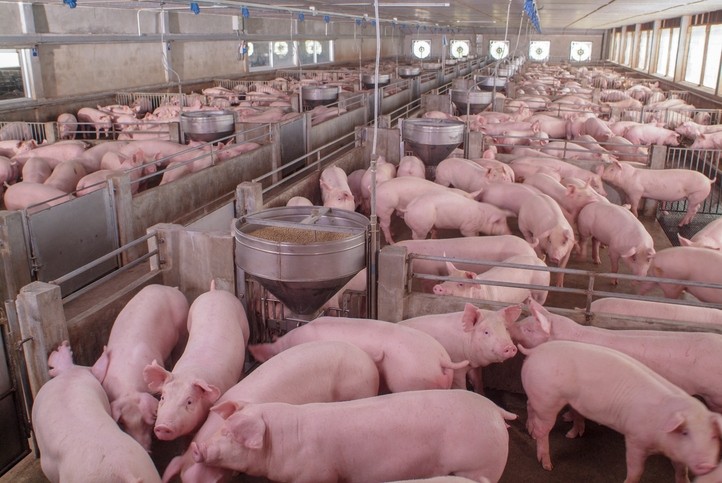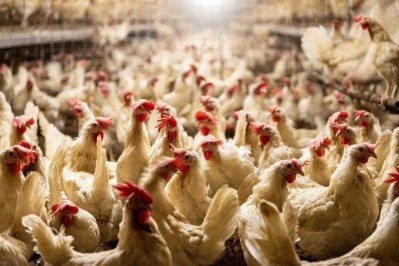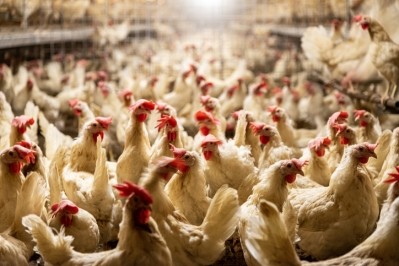dsm-firmenich adapts as nutritional needs of fattening pigs evolve

Adjustments in lysine, NE, and amino acids are crucial, along with considerations for vitamins B and D, and digestible phosphorus. Recent findings stress the significance of vitamin D3 for muscle development and maintenance, supported by its receptors in various muscle types, claims an expert.
Maria Walsh, director of global marketing for swine at dsm-firmenich, elucidates on how the company is broadening its swine portfolio to meet these market demands with a new adaptive nutrition concept tailored for fattening pigs.
Adaptive nutrition strives to balance the animals' nutritional requirements, encompassing muscle growth, immune competence, and bone health, by acknowledging their physiological competition for nutrients, she told us.
"We've had substantial collaboration with leading genetics companies and recent discussions have revealed significant advancements in lean muscle deposition compared to five years ago.”
However, there's a notable disparity between current feeding practices and genetic progress, she reported. While genetics companies provide recommendations based on their advancements, conventional feeding practices relying on outdated references like NRC may not be aligned, according to the swine specialist.
Coupled with that is the growing emphasis on sustainability and the shift towards less nutrient-dense diets that impact the supply of phosphorus, crude protein, and nitrogen to these high performance pigs.
"Indicators within production systems are demonstrating potential mismatches between the nutritional needs of these animals and the diets they are traditionally fed."
Walsh pointed out potential negative consequences of this mismatch, such as increased lameness and ear and tail necrosis, indicative of underlying immune response issues.
dsm-firmenich subsequently initiated efforts to address this dispartity, engaging further with breeding firms to gain a comprehensive understanding of the current characteristics and nutritional requirements of these animals.
It particularly focused on understanding the vitamin D status of the pigs. The company's research revealed deficiencies in various regions, prompting interventions to optimize vitamin D levels, which demonstrated positive impacts on issues like ear necrosis, Walsh added.
Optimizing muscle development
The company is launching Verax DBS Analytics service to help swine producers assess the vitamin D3 status of their animals.
"We're advancing in this area with the launch of this concept through our service, alongside MaxiFicient Boost GF, our latest offering in the portfolio. This product utilizes vitamin D as its foundation, enhanced further with a blend of triterpenoids. We're specifically focusing on optimizing muscle development, recognizing the pivotal role of 25-hydroxy in the pathways associated with muscle accretion."
Collaborations with innovative startups have also enabled a deeper understanding of gene expression pathways, shedding light on the physiological changes post-nutrient absorption.
"It's not just about introducing new products; it's about taking a holistic approach to nutrition, considering the specific challenges faced in different markets. The 'MIB concept'—muscle, immunity, and bone—guides our interventions, recognizing the interplay between nutrition, genetics, and environmental factors," Walsh emphasized.
Tweaking micronutrient levels
Furthermore, she discussed practical tweaks in micronutrient levels, such as phosphorus optimization and managing calcium levels to mitigate anti-nutrient effects, which have shown promising results in improving feed efficiency.
"We're also observing a significant trend away from antibiotic usage towards a preventive health approach. This shift includes a rise in vaccination rates, which not only aligns with sustainability goals but also enhances immune responses. Consequently, there's an increased demand for various nutrients. However, the supply of these nutrients remains finite, akin to a fixed-size cake that cannot be expanded. As a result, resource allocation becomes crucial.
“In this scenario, there's a notable emphasis on directing nutrients towards muscle development, particularly as animals exhibit a greater propensity for muscle deposition. This allocation process follows a hierarchy: if there's a robust immune response, resources are diverted towards muscle growth. Conversely, in the absence of a strong immune challenge, muscle development takes precedence over other physiological needs, potentially leading to bone issues.
“Similar challenges are observed in poultry production, where the proliferation of breast muscle can affect bone health.”
Consequently, she said, there is a need to address allocation challenges to optimize production systems, with her stressing the importance of understanding the intricate dynamics of nutrient allocation, a topic the company aims to delve deeper into as it interacts with producers.
Digitalization
Walsh outlined plans to expand the VERAX DBS service globally, leveraging digitalization to provide accessible and timely nutritional insights to customers.
“We're also exploring additional blood biomarkers, leveraging the use of Dried Blood Spot (DBS) cards. VERAX offers a significant advantage in this regard. Instead of the traditional process involving veterinary visits, vial blood collection, dry ice storage, and shipping, we simply require a single drop of blood, dried onto a small card, and mailed to the laboratory. This single blood sample can yield a wealth of valuable information. Notably, from a biosecurity standpoint, this method minimizes on-farm visits, reducing the risk of disease transmission. The process is efficient and convenient; farmers can easily order kits online, register their samples, and access results through their online accounts.”
Looking forward, dsm-firmenich envisions an incremental approach to the adaptive nutrition model: comprehending the evolving nutritional demands, capitalizing on advancements in genetics and technology, and incorporating sustainability principles to enhance animal performance and welfare, concluded Walsh.















